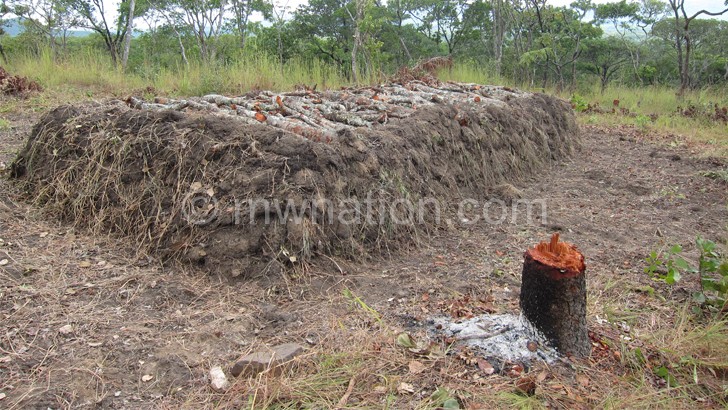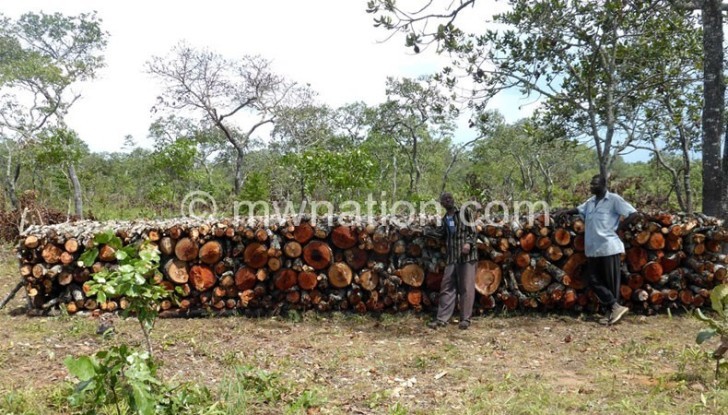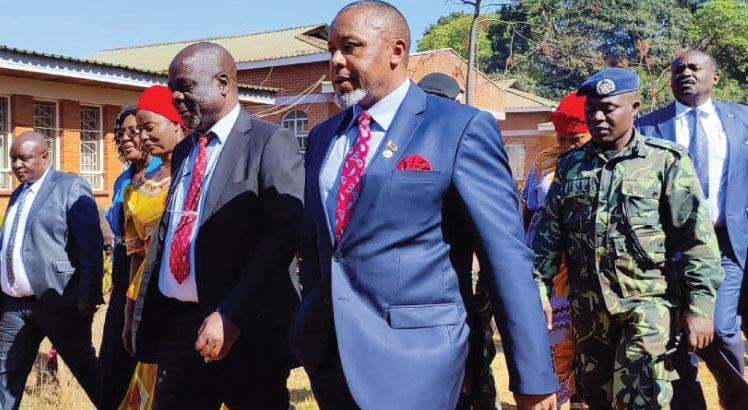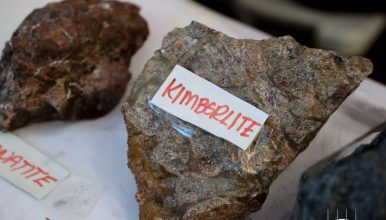Dzalanyama: Our forest, our future
Dzalanyama Forest Reserve located 50 kilometers to the west of Lilongwe City used to be a thick forest packed with wildlife, indigenous and exotic tree species. The forest also used to support agricultural and livestock production. However, unsustainable human activities have brought the reserve to the brink of extinction. In this three-part series, our contributor CHARLES MKOKA looks at efforts to restore the vital ecosystem that feeds Lilongwe City and surrounding areas.
Dzalanyama is the second biggest forest reserve in the country and it was gazetted in 1922. It covers an area of 989 square kilometres that stretch three districts namely; Dedza, Lilongwe and Mchinji.

The reserve is one of the most valuable forests resources that sustain water supply to Kamuzu dams 1 and 2. It is also the source of Diamphwe, Katete, Likuni and Lilongwe rivers, enabling winter cropping to downstream users.
However, unsustainable resource harvesting took its toll between 2010 and 2014 with charcoal production increasing exponentially on high calorific species of trees to satisfy the growing urban demand.
This led to other tree species with less calorific value for energy being left out such as Uapaca Kirkiana masuku; hence, distorting the species distribution and affecting animals and birds’ abundance in the reserve.
Nyuma Mughogho, Forestry Department deputy director says, the preliminary results of studies under Dzalanyama Forest Conservation Project by Kosaku Onaka, who was advisor on forest conservation, suggest that 60 percent of trees cut are for charcoal production for domestic use in the capital city.
She says the annual biomass loss to traditional energy in the three districts amounted to 50 tonnes per hectare (ha), half of the volume that was available 20 years ago.
“We conducted tours to the reserve to appreciate the extent of human induced degradation together with the media, parliamentarians and top government officials,” Mughogho explains. “This we did to sound the alarm and find lasting solutions to the problem threatening this ecosystem.”
According to Onaka, the study findings point to the fact that there was serious human-induced forest degradation at Chiunjiza gate and the surrounding areas.
The study also showed that on the hilly side of Lilongwe, which is still preserved, destruction had just commenced while in Dedza, the reserve is being degraded and the damage is ongoing.
Onaka says the most serious deforestated area is in Chiunjiza area which is upstream of Lilongwe River. Communities there are heavily cutting down trees for charcoal production and firewood.
“Half of the biomass could have been harvested already. However, the hilly area in Lilongwe, which is the most vulnerable landscape, is not yet deforested or degraded heavily. Dzalanyama is the biggest source of charcoal for the three districts, especially the capital city and that is the main cause of forest degradation.
“The current status is that 15 percent of total biomass stock in the reserve is harvested for domestic energy use annually. At the current pace of forest degradation, the reserve will be depleted in the next 5 to 10 years,” Onaka warns.
Sustainable initiatives
Dzalanyama is a critical ecosystem that supports millions of people through various livelihood interventions.
“That is why there is need to ensure this resource is conserved for future generations and posterity,” says Mughogho.
The warning shot fired by Onaka has resulted in authorities in the Ministry of Natural Resources, Energy and Mining taking steps to appreciate the extent of the destruction on the ground.
Government has also put in place interventions to curb the growing level of degradation and ensure that communities engage in sustainable resource harvesting and environment-friendly practices become paramount.
To address the escalating levels of unsustainable utilisation of the reserve resources, the five-year Project for Conservation and Sustainable Management of Dzalanyama Forest Reserve (Cosma-DFR) started in 2016 and will run until 2021.
The programme’s technical support is being provided by Japanese International Cooperation Agency (Jica) experts.
Cosma-DFR is working with the Department of Forestry where there is now enhanced collaboration among other government departments, organisations, the private sector and communities to restore Dzalanyama’s ecosystem.
The collaboration has been extended beyond forest management activities to include monitoring and evaluation, livelihoods improvement, financial mechanisms and communication working groups.
According to the project’s progress report under livelihood initiatives the technical team is involved in charcoal and fire wood production surveys. Once the data has been generated, it will help to quantify utilisation levels of tree species resources and confirm interest of forest management activities in both group village head and village heads within the peripheral of the reserve.
Group interviews to ensure existence of forest conservation and management group (such as village natural resources management committees-(VNRMC) have also been done.
From the villager’s initiatives, patrolling Dzalanyama Forest Reserve has been activated and a community forest scout programme has started in Dedza.
“So far, several individuals have been reached. As part of community participation, these are expected to scale up patrolling and enforcement activities in their respective areas, to curb malpractices that are not environmentally friendly in nature,” Mughogho says.
As part of community outreach, campaigns are underway in surrounding villages to disseminate information on conservation and wise use of natural resources. The latest being a high profile patronised tree-planting exercise that was led by the Office of the President and Cabinet on January 27 2018.
This signified the importance of the reserve and the role it has in providing diverse ecosystem services.
Striking a balance
To strike a balance between conservation and pressure of energy demand, Mughogho says the department launched the National Charcoal Strategy (NCS) 2017-2027 to guide its operations as the department acknowledges that charcoal consumption will continue to be in use until in the future.
She explains that the NCS notes that more than 97 percent of households in Malawi rely on illegally and unsustainably sourced biomass (charcoal and firewood) for domestic cooking and heating energy.
This has resulted in high levels of deforestation and forest degradation throughout the country, with downstream negative impacts on water availability, hydropower-generating capacity, and vulnerability of Malawians to the effects of climate change.
Mughogho says the strategy, therefore, presents a multi-sectoral framework and approach, focused on pillars that define opportunities to incrementally address problems of charcoal production and demand in the near, medium and long-term.
“It aligns with Malawi’s Vision 2020, the Malawi Growth and Development Strategy [MGDS], and other national strategies and policies that promote broad objectives of reducing deforestation, forest degradation and dependence on solid biomass fuels.
“The strategy also supports the implementation of various global initiatives and goals, including the UN Sustainable Energy for All by 2030,” she explains.
Mughogho says, in partnership with the Department of Energy, her department is encouraging people to use other alternative sources of energy such as briquettes, liquefied natural gas and those with the capacity to switch to electricity use.
Community participation
One environmentally- friendly intervention, which the Department of Forestry is spearheading among communities is bee-keeping. Instead of making a living out of charcoal, communities are encouraged to turn to bee-keeping.
Currently, apiculture is being practised within Katete Plantations inside the reserve.
Alexandra German, a beekeeper from Bwakatantha Cooperative Group in the area says some of the group members have already started acknowledging the benefits from the initiative.
“I used the money from honey to pay off part-time workers that helped to harvest my crops in the field last year. We are very grateful to Jica for teaching us bee-keeping and providing us with the equipment to do our activities with ease,” he says.
Traditional Authority (T/A) Masambankhunda, whose area borders the reserve, want more community involvement in preserving the forest.
He extends a message to his fellow senior chiefs in Dedza and Mchinji districts to be in the fore front in drumming up support and restore the degraded forest areas.
“Let us allow natural regeneration of trees in our areas first. This will be a catalyst for us to own woodlots. As such conserving forests in the long run, that are under the management of Department of Forestry will be easier,” he says.





